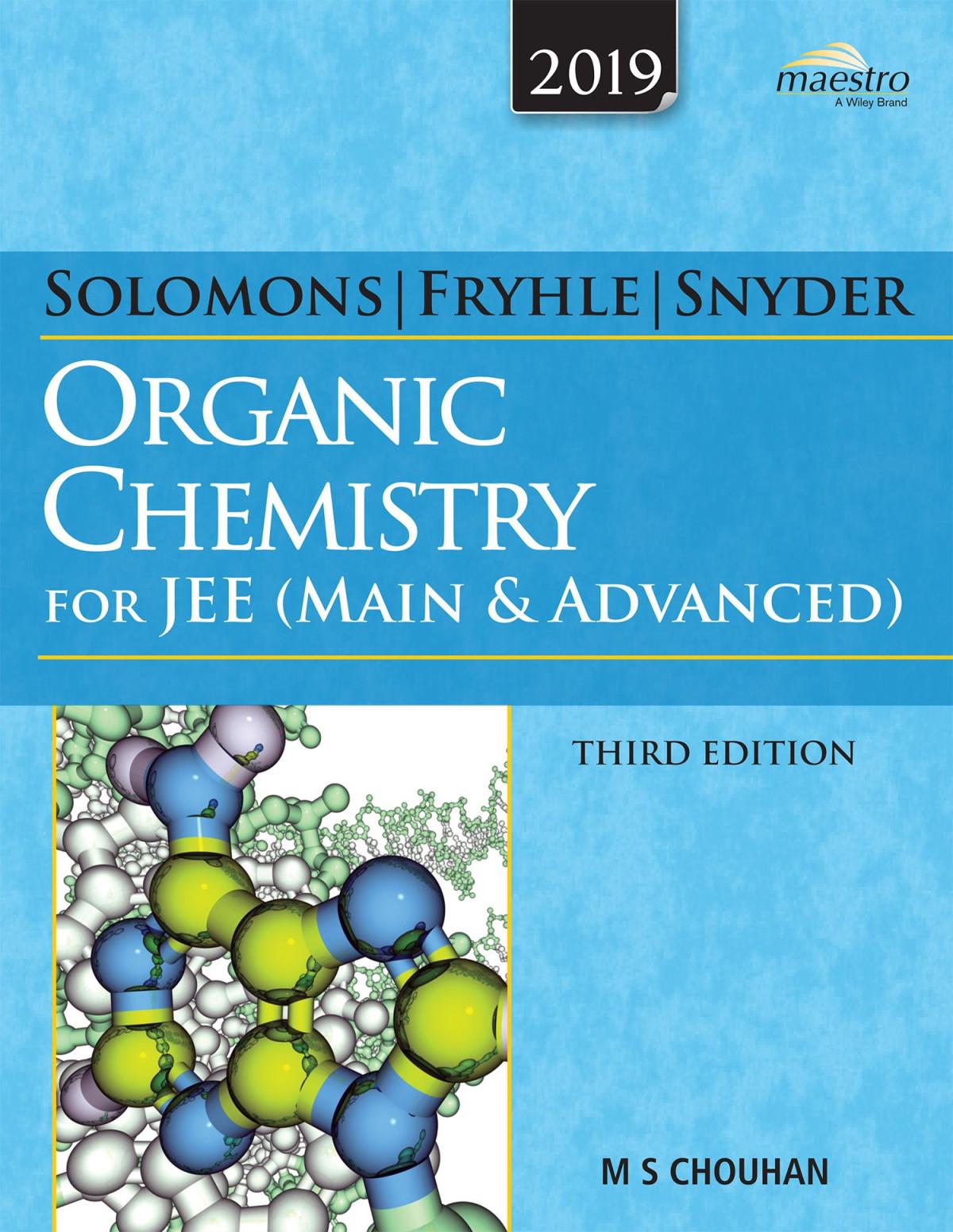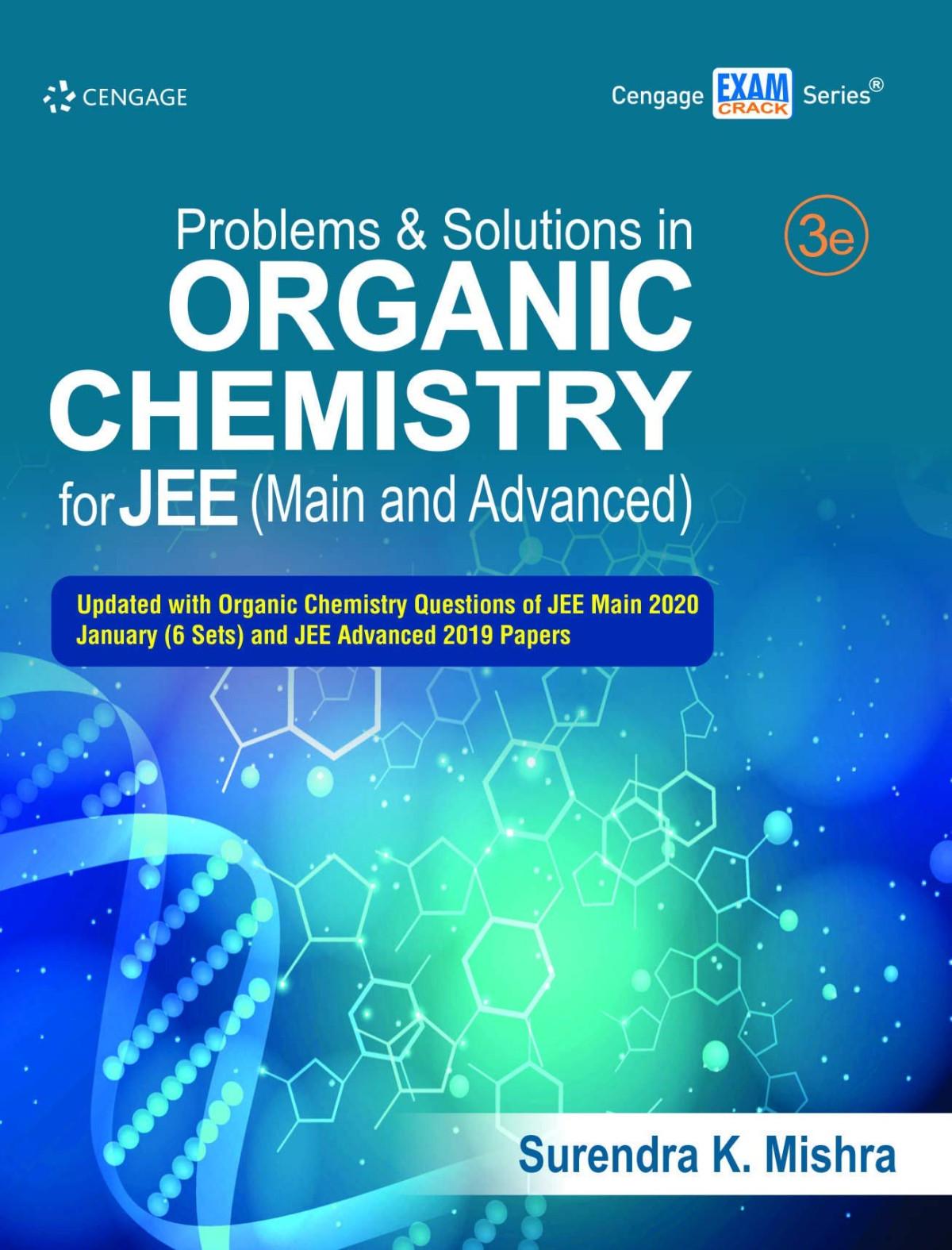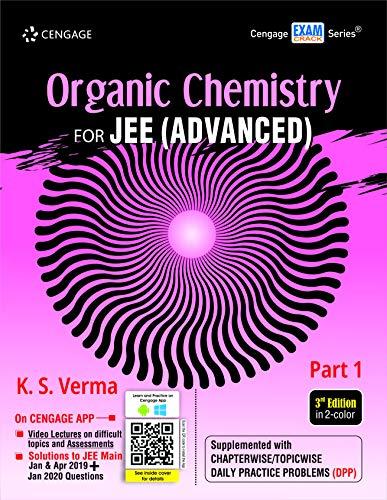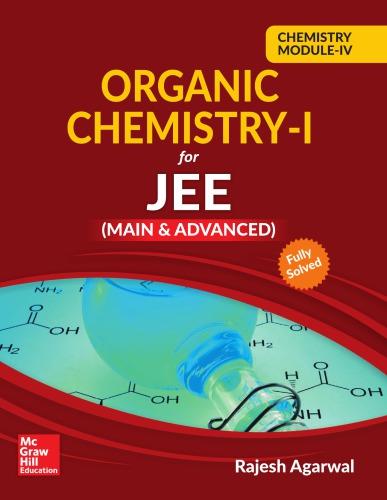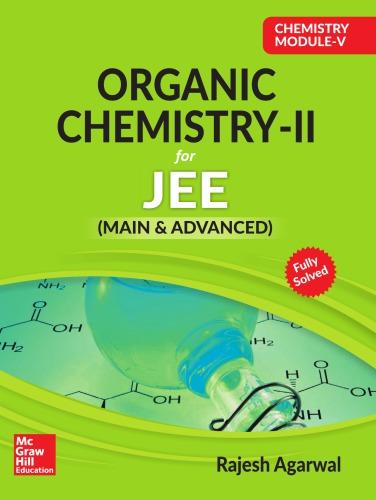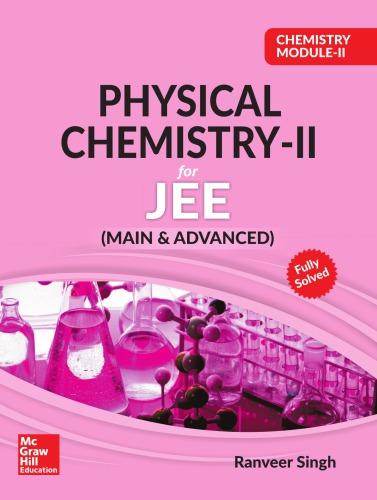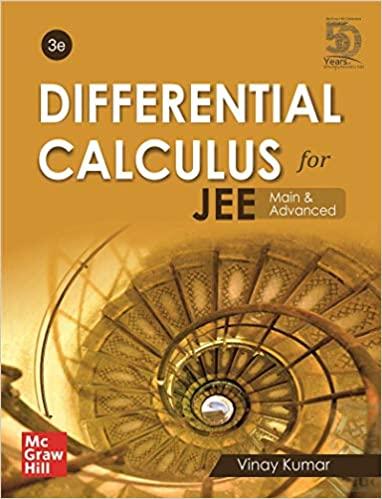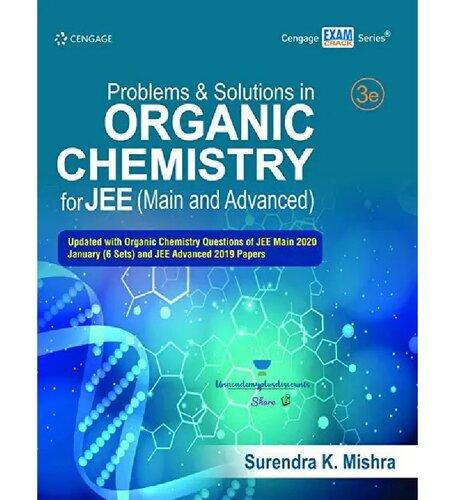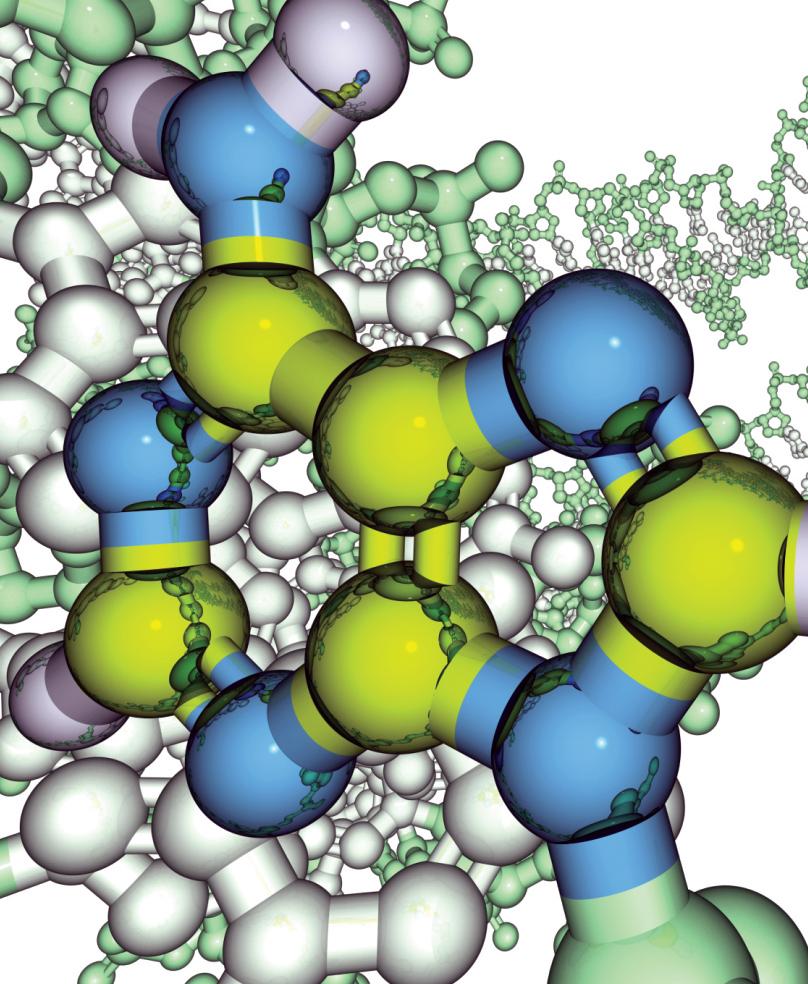Preface to the Original Edition
“IT’S ORGANIC CHEMISTRY!”
That’s what we want students to exclaim after they become acquainted with our subject. Our lives revolve around organic chemistry, whether we all realize it or not. When we understand organic chemistry, we see how life itself would be impossible without it, how the quality of our lives depends upon it, and how examples of organic chemistry leap out at us from every direction. That’s why we can envision students enthusiastically exclaiming “It’s organic chemistry!” when, perhaps, they explain to a friend or family member how one central theme—organic chemistry—pervades our existence. We want to help students experience the excitement of seeing the world through an organic lens, and how the unifying and simplifying nature of organic chemistry helps make many things in nature comprehensible.
Our book makes it possible for students to learn organic chemistry well and to see the marvelous ways that organic chemistry touches our lives on a daily basis. Our book helps students develop their skills in critical thinking, problem solving, and analysis—skills that are so important in today’s world, no matter what career paths they choose. The richness of organic chemistry lends itself to solutions for our time, from the fields of health care, to energy, sustainability, and the environment. After all, it’s organic chemistry!
Guided by these goals, and by wanting to make our book even more accessible to students than it has ever been before, we have brought many changes to this edition.
NEW TO THIS EDITION
With this edition we bring Scott Snyder on board as a co-author. We’re very excited to have Scott join our team. Scott brings a rich resource of new perspectives to the book, particularly in the arena of complex molecule synthesis. Scott has infused new examples and applications of exciting chemistry that help achieve our goals. In addition to adding his perspectives to the presentation of core chemistry throughout the book, Scott’s work is manifest in most of this edition’s chapter openers and in all of the chapter closers, couched in a new feature called “Why do these topics matter?”.
“Why do these topics matter?” is a new feature that bookends each chapter with a teaser in the opener and a captivating example of organic chemistry in the closer. The chapter opener seeks to whet the student’s appetite both for the core chemistry in that chapter as well as a prize that comes at the end of the chapter in the form of a “Why do these topics matter?” vignette. These new closers consist of fascinating nuggets of organic chemistry that stem from research relating to medical, environmental, and other aspects of organic chemistry in the world around us, as well as the history of the science. They show the rich relevance of what students have learned to applications that have direct bearing on our lives and wellbeing. For example, in Chapter 6, the opener talks about the some of the benefits and drawbacks of making substitutions in a recipe, and then compares such changes to the nucleophilic displacement reactions that similarly allow chemists to change molecules and their properties. The closer then shows how exactly such reactivity has enabled scientists to convert simple table sugar into the artificial sweetener Splenda which is 600 times as sweet, but has no calories!
Laying the foundation earlier Certain tools are absolutely key to success in organic chemistry. Among them is the ability to draw structural formulas quickly and correctly.
In this edition, we help students learn these skills even sooner than ever before by moving coverage of structural formulas and the use curved arrows earlier in the text (Section 3.5). We have woven together instruction about Lewis structures, covalent bonds, and dash structural formulas, so that students build their skills in these areas as a coherent unit, using organic examples that include alkanes, alkenes, alkynes, and alkyl halides. One could say that it’s a “use organic to teach organic” approach.
Getting to the heart of the matter quicker Acid-base chemistry, and electrophiles and nucleophiles are at the heart of organic chemistry. Students cannot master the subject if they do not have a firm and early grasp of these topics. In this edition, we cut to the chase with these topics earlier in Chapter 3 than ever before, providing a streamlined and highly efficient route to student mastery of these critical concepts.
Improving a core area: substitution reactions All organic instructors know how important it is for their students to have a solid understanding of substitution reactions. This is one reason our text has proven its lasting value. In this edition we have even further enhanced the presentation of substitution reactions in several ways, including a revised introduction of SN1 reactions (Section 6.10) through the classic hydrolysis experiments of Hughes, and a newly organized presentation of solvent effects on the rate of substitution reactions.
Striking a strong balance of synthetic methods Students need to learn methods of organic synthesis that are useful, as environmentally friendly as possible, and that are placed in the best overall contextual framework. In this edition we incorporate the Swern oxidation (Section 11.4B), long held as a useful oxidation method and one that provides a less toxic alternative to chromate oxidations in some cases. We also restore coverage of the Wolff-Kishner reduction (Section 15.8C) and the Baeyer-Villiger oxidation (Section 15.12), two methods whose importance has been proven by the test of time. The chemistry of radical reactions has also been refocused and streamlined by reducing thermochemistry content and by centralizing the coverage of allylic and benzylic radical substitutions (including NBS reactions) in one chapter (Sections 9.7 and 9.8), instead of distributing it between two, as before. The addition of sulfuric acid to alkenes and the Kolbe reaction have been deleted from the text, since these have little practical use in the laboratory.
Maintaining an eye for clarity With every edition we improve the presentation of topics, reactions, and diagrams where the opportunity arises. This edition includes improved mechanism depictions for aromatic sulfonation and thionyl chloride substitution.
Showing how things work A mechanistic understanding of organic chemistry is key to student success in organic chemistry. Mechanisms have always been central to the book, and in this edition the authors have added a mechanistic framework for the Swern and chromate alcohol oxidations (Section 11.4) by presenting elimination of the carbinol hydrogen and a leaving group from oxygen as the common theme.
TRADITIONAL PEDAGOGICAL STRENGTHS
Solved Problems Knowing “where to begin” to solve organic chemistry problems is one of the greatest challenges faced by today’s students. By modeling problem solving strategies, students begin to understand the patterns inherent in organic chemistry and learn to apply that knowledge to new situations. In this edition we have added even more Solved Problems. They are usually paired with a related Practice Problem
Practice Problems Students need ample opportunities to practice and apply their new found strategies for solving organic chemistry problems. We’ve added to our rich array of in-text Practice Problems to provide students with even more opportunities to check their progress as they study. If they can work the practice problem, they should move on. If not, they should review the preceding presentation.
Solved Problem 11.2
Which reagents would you use to accomplish the following transformations?
Answer
(a) To oxidize a primary alcohol to a carboxylic acid, use (1) potassium permanganate in aqueous base, followed by (2) H3O+, or use chromic acid (H2CrO4).
(b) To reduce a carboxylic acid to a primary alcohol, use LiAlH4
(c) To oxidize a primary alcohol to an aldehyde, use the Swern oxidation or pyridinium chlorochromate (PCC).
(d) To reduce an aldehyde to a primary alcohol, use NaBH4 (preferably) or LiAlH4
Practice Problem 11.3
Show how each of the following transformations could be accomplished:
End-of-Chapter Problems As athletes and musicians know, practice makes perfect. The same is true with organic chemistry. The End of Chapter problems, categorized by topic, provide essential practice for students and help them build mastery of both concepts and skills presented throughout the chapter. Many of the End of Chapter problems are cast in a visual format using structures, equations, and schemes.
7.28 Give the IUPAC names for each of the following: H
7.29 Without consulting tables, arrange the following compounds in order of decreasing acidity: Pentane 1-Pentene 1-Pentyne 1-Pentanol
Synthesis
7.30 Outline a synthesis of propene from each of the following: (a) Propyl chloride (b) Isopropyl chloride (c) Propyl alcohol (d) Isopropyl alcohol
7.34 Outline a synthesis of phenylethyne from each of the following: Br Br (a) (b) Br Br (c) (d)
Dehydrohalogenation and Dehydration
7.35 Write a three-dimensional representation for the transition state structure leading to formation of 2-methyl2-butene from reaction of 2-bromo-2-methylbutane with sodium ethoxide
7.36 When trans-2-methylcyclohexanol (see the following reaction) is subjected to acid-catalyzed dehydration, the major product is 1-methylcyclohexene:
A Mechanism for the Reaction Understanding mechanisms and the ability to recognize patterns among them is a key component in determining student success in organic chemistry. We provide A Mechanism for the Reaction boxes that show step-by-step details about how reactions take place so that students have the tools to understand rather than memorize organic reactions.
SOLVED PROBLEMS
model problem solving strategies.
PRACTICE PROBLEMS provides opportunities to check progress.
END-OF-CHAPTER PROBLEMS are grouped and labeled by topic. Students and instructors can more easily select problems for specific purposes.
A MECHANISM FOR THE REACTION Stepped out reactions with just the right amount of detail provides the tools for students to understand rather than memorize reaction mechanisms
A MECHANISM FOR THE REACTION Hydrogen Atom Abstraction
General Reaction
Key Ideas as Bullet Points The amount of content covered in organic chemistry can be overwhelming to students. To help students focus on the most essential topics, key ideas are emphasized as bullet points in every section. In preparing bullet points, we have distilled appropriate concepts into simple declarative statements that convey core ideas accurately and clearly. No topic is ever presented as a bullet point if its integrity would be diminished by oversimplification, however.
“How to” Sections Students need to master important skills to support their conceptual learning. “How to” Sections throughout the text give step-by-step instructions to guide students in performing important tasks, such as using curved arrows, drawing chair conformations, planning a Grignard synthesis, determining formal charges and writing Lewis structures.
The Chemistry of . . . . Virtually every instructor has the goal of showing students how organic chemistry relates to their field of study and to their everyday life experience. The authors assist their colleagues in this goal by providing boxes titled “The Chemistry of . . .” that provide interesting and targeted examples that engage the student with chapter content.
Summary and Review Tools At the end of each chapter, Summary and Review Tools provide visually oriented roadmaps and frameworks that students can use to help organize and assimilate concepts as they study and review chapter content. Intended to accommodate diverse learning styles, these include Synthetic
SUMMARY AND REVIEW TOOLS Visually oriented study tools accommodate diverse learning styles.
Connections, Concept Maps, Thematic Mechanism Review Summaries, and the detailed Mechanism for the Reaction boxes already mentioned. We also provide Helpful Hints and richly annotated illustrations throughout the text.
COVERAGE
Throughout the book, we have streamlined or reduced content to match the modern practice of organic chemistry, and we have provided new coverage of current reactions, while maintaining our commitment to an appropriate level and breadth of coverage.
• Chapters on carbonyl chemistry that are organized to emphasize mechanistic themes of nucleophilic addition, acyl substitution, and reactivity at the a-carbon.
ORGANIZATION—An Emphasis on the Fundamentals
So much of organic chemistry makes sense and can be generalized if students master and apply a few fundamental concepts. Therein lays the beauty of organic chemistry. If students learn the essential principles, they will see that memorization is not needed to succeed.
Most important is for students to have a solid understanding of structure— of hybridization and geometry, steric hindrance, electronegativity, polarity, formal charges, and resonance—so that they can make intuitive sense of mechanisms. It is with these topics that we begin in Chapter 1. In Chapter 2 we introduce the families of functional groups—so that students have a platform on which to apply these concepts.
We begin our study of mechanisms in the context of acid-base chemistry in Chapter 3. Acid-base reactions are
to organic reactions, and they
lend themselves to introducing several important topics that students need early in the course: (1) curved arrow notation for illustrating mechanisms, (2) the relationship between free-energy changes and equilibrium constants, and (3) the importance of inductive and resonance effects and of solvent effects.
In Chapter 3 we present the first of many “A Mechanism for the Reaction” boxes, using an example that embodies both Brønsted-Lowry and Lewis acid-base principles. All throughout the book, we use boxes like these to show the details of key reaction mechanisms. All of the Mechanism for the Reaction boxes are listed in the Table of Contents so that students can easily refer to them when desired.
A central theme of our approach is to emphasize the relationship between structure and reactivity. This is why we choose an organization that combines the most useful features of a functional group approach with one based on reaction mechanisms. Our philosophy is to emphasize mechanisms and fundamental principles, while giving students the anchor points of functional groups to apply their mechanistic knowledge and intuition. The structural aspects of our approach show students what organic chemistry is. Mechanistic aspects of our approach show students how it works. And wherever an opportunity arises, we show them what it does in living systems and the physical world around us.
In summary, our writing reflects the commitment we have as teachers to do the best we can to help students learn organic chemistry and to see how they can apply their knowledge to improve our world. The enduring features of our book have proven over the years to help students learn organic chemistry.
To the Student
Contrary to what you may have heard, organic chemistry does not have to be a difficult course. It will be a rigorous course, and it will offer a challenge. But you will learn more in it than in almost any course you will take—and what you learn will have a special relevance to life and the world around you. However, because organic chemistry can be approached in a logical and systematic way, you will find that with the right study habits, mastering organic chemistry can be a deeply satisfying experience. Here, then, are some suggestions about how to study:
1. Keep up with your work from day to day— never let yourself get behind. Organic chemistry is a course in which one idea almost always builds on another that has gone before. It is essential, therefore, that you keep up with, or better yet, be a little ahead of your instructor. Ideally, you should try to stay one day ahead of your instructor’s lectures in your own class preparations. The lecture, then, will be much more helpful because you will already have some understanding of the assigned material. Your time in class will clarify and expand ideas that are already familiar ones.
2. Study material in small units, and be sure that you understand each new section before you go on to the next. Again, because of the cumulative nature of organic chemistry, your studying will be much more effective if you take each new idea as it comes and try to understand it completely before you move on to the next concept.
3. Work all of the in-chapter and assigned problems. One way to check your progress is to work each of the in-chapter problems when you come to it. These problems have been written just for this purpose and are designed to help you decide whether or not you understand the material that has just been explained. You should also carefully study the Solved Problems. If you understand a Solved Problem and can work the related in-chapter problem, then you should go on; if you cannot, then you should go back and study the preceding material again. Work all of the problems assigned by your instructor from the end of the chapter, as well. Do all of your problems in a notebook and bring this book with you when you go to see your instructor for extra help.
4. Write when you study. Write the reactions, mechanisms, structures, and so on, over and over again.
Organic chemistry is best assimilated through the fingertips by writing, and not through the eyes by simply looking, or by highlighting material in the text, or by referring to flash cards. There is a good reason for this. Organic structures, mechanisms, and reactions are complex. If you simply examine them, you may think you understand them thoroughly, but that will be a misperception. The reaction mechanism may make sense to you in a certain way, but you need a deeper understanding than this. You need to know the material so thoroughly that you can explain it to someone else. This level of understanding comes to most of us (those of us without photographic memories) through writing. Only by writing the reaction mechanisms do we pay sufficient attention to their details, such as which atoms are connected to which atoms, which bonds break in a reaction and which bonds form, and the three-dimensional aspects of the structures. When we write reactions and mechanisms, connections are made in our brains that provide the long-term memory needed for success in organic chemistry. We virtually guarantee that your grade in the course will be directly proportional to the number of pages of paper that your fill with your own writing in studying during the term.
5. Learn by teaching and explaining. Study with your student peers and practice explaining concepts and mechanisms to each other. Use the exercises your instructor may assign as vehicles for teaching and learning interactively with your peers.
6. Use the answers to the problems in the Study Guide in the proper way. Refer to the answers only in two circumstances: (1) When you have finished a problem, use the Study Guide to check your answer. (2) When, after making a real effort to solve the problem, you find that you are completely stuck, then look at the answer for a clue and go back to work out the problem on your own. The value of a problem is in solving it. If you simply read the problem and look up the answer, you will deprive yourself of an important way to learn.
7. Use molecular models when you study. Because of the three-dimensional nature of most organic molecules, molecular models can be an invaluable aid to your understanding of them.
Preface to the Original Edition v Preface to the Adapted Version xi About the Authors xiii About the Adapting Authors xv To the Student xvii
1
The Basics: Bonding and Molecular Structure 1
1.1 Development of the Science of Organic Chemistry 1
1.2 Atomic Structure 2
1.3 The Structural Theory of Organic Chemistry 3
1.4 Chemical Bonds: The Octet Rule 5
1.5 Resonance Theory 7
1.6 Hyperconjugation 18
1.7 The Structure of Methane and Ethane: sp3 Hybridization 25
1.8 The Structure of Ethene (Ethylene): sp2 Hybridization 26
1.9 The Structure of Ethyne (Acetylene): sp Hybridization 29
1.10 How to Interpret and Write Structural Formulas 31
2 Families of Carbon Compounds: Functional Groups and Intermolecular Forces 43
2.1 Hydrocarbons: Representative Alkanes, Alkenes, Alkynes, and Aromatic Compounds 44
2.2 Polar and Nonpolar Molecules 47
2.3 Functional Groups 49
2.4 Alkyl Halides or Haloalkanes 51
2.5 Alcohols 51
2.6 Ethers 52
2.7 Amines 53
2.8 Aldehydes and Ketones 54
2.9 Carboxylic Acids, Esters, and Amides 55
2.10 Nitriles 57
2.11 Summary of Important Families of Organic Compounds 58
2.12 Physical Properties and Molecular Structure 59
2.13 Summary of Attractive Electric Forces 66
3
An Introduction to Organic Reactions and Their Mechanisms: Acids and Bases 73
3.1 Reactions and Their Mechanisms 73
3.2 Acid–Base Reactions 75
3.3 Lewis Acids and Bases 77
3.4 Heterolysis of Bonds to Carbon: Carbocations and Carbanions 79
3.5 HOW TO Use Curved Arrows in Illustrating Reactions 80
3.6 The Strength of Brønsted–Lowry Acids and Bases: Ka and pKa 85
3.7 HOW TO Predict the Outcome of Acid–Base Reactions 88
3.8 Relationships between Structure and Acidity 90
3.9 Energy Changes 94
3.10 The Relationship between the Equilibrium Constant and the Standard Free-Energy Change, DG° 95
3.11 The Acidity of Carboxylic Acids versus Alcohols 96
3.12 The Effect of the Solvent on Acidity 99
3.13 Organic Compounds as Bases 100
3.14 Acids and Bases in Nonaqueous Solutions 101
3.15 Acid–Base Reactions and the Synthesis of Deuterium- and Tritium-Labeled Compounds 103
3.16 Reaction of NaHCO3 as a Base 104
3.17 Steric Inhibition of Resonance (SIR) Effect 105
3.18 Ortho and Para Effects 106
4
Stereochemistry: Chiral Molecules 127
4.1 Chirality and Stereochemistry 127
4.2 Isomerism: Constitutional Isomers and Stereoisomers 129
4.3 Enantiomers and Chiral Molecules 130
4.4 A Single Chirality Center Causes a Molecule to Be Chiral 131
4.5 More about the Biological Importance of Chirality 133
4.6 HOW TO Test for Chirality: Planes of Symmetry 135
4.7 Naming Enantiomers: The R,S-System 142
4.8 Properties of Enantiomers: Optical Activity 146
4.9 The Origin of Optical Activity 150
4.10 The Synthesis of Chiral Molecules 152
4.11 Chiral Drugs 154
4.12 Molecules with More than One Chirality Center 155
4.13 Fischer Projection Formulas 159
4.14 Stereoisomerism of Cyclic Compounds 160
4.15 Relating Configurations through Reactions in which no Bonds to the Chirality Center are Broken 163
4.16 Separation of Enantiomers: Resolution 166
4.17 Compounds with Chirality Centers Other than Carbon 169
4.18 Chiral Molecules That Do Not Possess a Chirality Center 169
4.19 Biphenyl 170
4.20 Racemization of Biphenyl Compounds 172
4.21 Tautomerism 173
4.22 Gero Entropy 176
Nomenclature and Conformations of Alkanes and Cycloalkanes 191
5.1 Introduction to Alkanes and Cycloalkanes 191
5.2 Shapes of Alkanes 192
5.3 HOW TO Name Alkanes, Alkyl Halides, and Alcohols: The IUPAC System 194
5.4 HOW TO Name Cycloalkanes 201
5.5 HOW TO Name Alkenes and Cycloalkenes 203
5.6 HOW TO Name Alkynes 205
5.7 Physical Properties of Alkanes and Cycloalkanes 206
5.8 Sigma Bonds and Bond Rotation 208
5.9 Conformational Analysis of Butane 210
5.10 The Relative Stabilities of Cycloalkanes: Ring Strain 217
5.11 Conformations of Cyclohexane: The Chair and the Boat 219
5.12 Substituted Cyclohexanes: Axial and Equatorial Hydrogen Groups 221
5.13 Disubstituted Cycloalkanes: Cis–Trans Isomerism 224
5.14 Bicyclic and Polycyclic Alkanes 229
5.15 Chemical Reactions of Alkanes 230
5.16 Synthesis of Alkanes and Cycloalkanes 230
5.17 HOW TO Gain Structural Information from Molecular Formulas and the Index of Hydrogen Deficiency 233
5.18 Applications of Basic Principles 234
6
Ionic Reactions
Nucleophilic Substitution and Elimination Reactions of Alkyl Halides 243
6.1 Alkyl Halides 243
6.2 Nucleophilic Substitution Reactions 245
6.3 Nucleophiles 246
6.4 Leaving Groups 248
6.5 Kinetics of a Nucleophilic Substitution Reaction: An SN2 Reaction 248
6.6 A Mechanism for the SN2 Reaction 249
6.7 Transition State Theory: Free-Energy Diagrams 251
6.8 The Stereochemistry of SN2 Reactions 253
6.9 The Reaction of tert-Butyl Chloride with Water: An SN1 Reaction 256
6.10 A Mechanism for the SN1 Reaction 257
6.11 Carbocations 258
6.12 The Stereochemistry of SN1 Reactions 260
6.13 Factors Affecting the Rates of SN1 and SN2 Reactions 263
6.14 Organic Synthesis: Functional Group Transformations Using SN2 Reactions 274
6.15 Elimination Reactions of Alkyl Halides 276
6.16 The E2 Reaction 280
6.17 The E1 Reaction 282
6.18 HOW TO Determine Whether Substitution or Elimination is Favored 283
6.19 Overall Summary 286
7
Alkenes and Alkynes I
Properties and Synthesis. Elimination Reactions of Alkyl Halides 295
7.1 Introduction 295
7.2 The (E )–(Z ) System for Designating Alkene Diastereomers 296
7.3 Relative Stabilities of Alkenes 297
7.4 Cycloalkenes 299
7.5 Synthesis of Alkenes via Elimination Reactions 300
7.6 Dehydrohalogenation of Alkyl Halides 300
7.7 Acid-Catalyzed Dehydration of Alcohols 306
7.8 Carbocation Stability and the Occurrence of Molecular Rearrangements 311
7.9 The Acidity of Terminal Alkynes 315
7.10 Synthesis of Alkynes by Elimination Reactions 316
7.11 Terminal Alkynes can be Converted to Nucleophiles for Carbon–Carbon Bond Formation 318
7.12 Hydrogenation of Alkenes 320
7.13 Hydrogenation: The Function of the Catalyst 322
7.14 Hydrogenation of Alkynes 323
7.15 An Introduction to Organic Synthesis 325
Alkenes and Alkynes II
Addition Reactions 341
8.1 Addition Reactions of Alkenes 341
8.2 Electrophilic Addition of Hydrogen Halides to Alkenes: Mechanism and Markovnikov’s Rule 343
8.3 Stereochemistry of the Ionic Addition to an Alkene 348
8.4 Addition of Water to Alkenes: Acid-Catalyzed Hydration 348
8.5 Alcohols from Alkenes through Oxymercuration–Demercuration: Markovnikov Addition 351
8.6 Alcohols from Alkenes through Hydroboration–Oxidation: Anti-Markovnikov Syn Hydration 354
8.7 Hydroboration: Synthesis of Alkylboranes 355
8.8 Oxidation and Hydrolysis of Alkylboranes 357
8.9 Summary of Alkene Hydration Methods 360
8.10 Protonolysis of Alkylboranes 360
8.11 Electrophilic Addition of Bromine and Chlorine to Alkenes 361
8.12 Stereospecific Reactions 363
8.13 Halohydrin Formation 365
8.14 Oxidation of Alkenes: Syn 1,2-Dihydroxylation 366
8.15 Oxidative Cleavage of Alkenes 368
8.16 Electrophilic Addition of Bromine and Chlorine to Alkynes 372
8.17 Addition of Hydrogen Halides to Alkynes 373
8.19 HOW TO Plan a Synthesis: Some Approaches and Examples 374
8.18 Oxidative Cleavage of Alkynes 374
8.20 Dimerization of Alkene 379
8.21 Prins Reaction 379
9
Radical Reactions 403
9.1 Introduction: How Radicals Form and How they React 403
9.2 Homolytic Bond Dissociation Energies (DH °) 405
9.3 Reactions of Alkanes with Halogens 408
9.4 Chlorination of Methane: Mechanism of Reaction 410
9.5 Halogenation of Higher Alkanes 413
9.6 Reactions that Generate Tetrahedral Chirality Centers 416
9.7 Allylic Substitution and Allylic Radicals 419
9.8 Benzylic Substitution and Benzylic Radicals 422
9.9 Radical Addition to Alkenes: The Anti-Markovnikov Addition of Hydrogen Bromide 425
9.10 Other Important Radical Reactions 427
10
Alcohols and Ethers
Synthesis and Reactions 443
10.1 Structure and Nomenclature 443
10.2 Physical Properties of Alcohols and Ethers 446
10.3 Synthesis of Alcohols from Alkenes 446
10.4 Reactions of Alcohols 448
10.5 Alcohols as Acids 450
10.6 Conversion of Alcohols into Alkyl Halides 451
10.7 Alkyl Halides from the Reaction of Alcohols with Hydrogen Halides 451
10.8 Alkyl Halides from the Reaction of Alcohols with PBr3 or SOCl2 454
10.9 Tosylates, Mesylates, and Triflates: Leaving Group Derivatives of Alcohols 456
10.10 Rearrangements 458
10.11 Synthesis of Ethers 461
10.12 Reactions of Ethers 466
10.13 Epoxides 468
10.14 Reactions of Epoxides 469
10.15 Anti 1,2-Dihydroxylation of Alkenes via Epoxides 472
10.16 Crown Ethers 472
11
Alcohols from Carbonyl Compounds 491
11.1 Structure of the Carbonyl Group 491
11.2 Oxidation–Reduction Reactions in Organic Chemistry 493
11.3 Alcohols by Reduction of Carbonyl Compounds 494
11.4 Oxidation of Alcohols 497
11.5 Organometallic Compounds 502
11.6 Preparation of Organolithium and Organomagnesium Compounds 502
11.7 Reactions of Organolithium and Organomagnesium Compounds 504
11.8 Alcohols from Grignard Reagents 506
11.9 Lithium Dialkylcuprates: The Corey–Posner, Whitesides–House Synthesis 519
12
Conjugated Unsaturated Systems 535
12.1 Introduction 535
12.2 Alkadienes and Polyunsaturated Hydrocarbons 536
12.3 1,3-Butadiene: Electron Delocalization 537
12.4 Electrophilic At tack on Conjugated Dienes: 1,4-Addition 538
12.5 The Diels–Alder Reaction: A 1,4-Cycloaddition Reaction of Dienes 542
13 Aromatic Compounds 551
13.1 The Discovery of Benzene 551
13.2 Nomenclature of Benzene Derivatives 552
13.3 Reactions of Benzene 554
13.4 The Kekulé Structure for Benzene 555
13.5 The Thermodynamic Stability of Benzene 556
13.6 Modern Theories of the Structure of Benzene 557
13.7 Hückel’s Rule: The 4n + 2 o Electron Rule 560
13.8 Other Aromatic Compounds 565
13.9 Heterocyclic Aromatic Compounds 567
14
Reactions of Aromatic Compounds 577
14.1 Electrophilic Aromatic Substitution Reactions 577
14.2 A General Mechanism for Electrophilic Aromatic Substitution 578
14.3 Halogenation of Benzene 580
14.4 Nitration of Benzene 581
14.5 Sulfonation of Benzene 582
14.6 Friedel–Crafts Alkylation 583
14.7 Friedel–Crafts Acylation 585
14.8 Limitations of Friedel–Crafts Reactions 587
14.9 Synthetic Applications of Friedel–Crafts Acylations: The Clemmensen and Wolff–Kishner Reductions 589
14.10 Substituents Can Affect Both the Reactivity of the Ring and the Orientation of the Incoming Group 591
14.11 How Substituents Affect Electrophilic Aromatic Substitution: A Closer Look 596
14.12 Reactions of the Side Chain of Alkylbenzenes 605
14.13 Alkenylbenzenes 607
14.14 Synthetic Applications 609
14.15 Allylic and Benzylic Halides in Nucleophilic Substitution Reactions 613
14.16 Reduction of Aromatic Compounds 614
15
Aldehydes and Ketones I. Nucleophilic Addition to the Carbonyl Group 629
15.1 Introduction 629
15.2 Nomenclature of Aldehydes and Ketones 629
15.3 Physical Properties 631
15.4 Synthesis of Aldehydes 632
15.5 Synthesis of Ketones 637
15.6 Nucleophilic Addition to the Carbon–Oxygen Double Bond 639
15.7 The Addition of Alcohols: Hemiacetals and Acetals 642
15.8 The Addition of Primary and Secondary Amines 650
15.9 The Addition of Hydrogen Cyanide: Cyanohydrins 653
15.10 The Addition of Ylides: The Wittig Reaction 655
15.11 Oxidation of Aldehydes 658
15.12 The Baeyer–Villiger Oxidation 658
15.13 Chemical Analyses for Aldehydes and Ketones 663
16
Aldehydes and Ketones II. Aldol Reactions 677
16.1 The Acidity of the ` Hydrogens of Carbonyl Compounds: Enolate Anions 677
16.2 Keto and Enol Tautomers 678
16.3 Reactions via Enols and Enolates 679
16.4 Aldol Reactions: Addition of Enolates and Enols to Aldehydes and Ketones 685
16.5 Crossed Aldol Condensations 690
16.6 Cyclizations via Aldol Condensation 696
16.7 Lithium Enolates 697
17
Carboxylic Acids and Their Derivatives 709
17.1 Introduction 709
17.2 Nomenclature and Physical Properties 710
17.3 Preparation of Carboxylic Acids 715
17.4 Acyl Substitution: Nucleophilic Addition–Elimination at the Acyl Carbon 717
17.5 Acyl Chlorides 719
17.6 Carboxylic Acid Anhydrides 721
17.7 Esters 722
17.8 Amides 727
17.9 Derivatives of Carbonic Acid 733
17.10 Decarboxylation of Carboxylic Acids 735
17.11 Chemical Tests for Acyl Compounds 738
17.12 Summary of the Reactions of Carboxylic Acids and Their Derivatives 741
18 Amines 751
18.1 Nomenclature 751
18.2 Physical Properties and Structure of Amines 753
18.3 Basicity of Amines: Amine Salts 754
18.4 Preparation of Amines 757
18.5 Reactions of Amines 765
18.6 Reactions of Amines with Nitrous Acid 767
18.7 Replacement Reactions of Arenediazonium Salts 769
18.8 Coupling Reactions of Arenediazonium Salts 772
18.9 Reactions of Amines with Sulfonyl Chlorides 774
18.10 Synthesis of Sulfa Drugs 775
18.11 Eliminations Involving Ammonium Compounds 776
18.12 The Cope Elimination 777
18.13 Summary of Preparations and Reactions of Amines 777
19
Phenols and Aryl Halides 787
19.1 Structure and Nomenclature of Phenols 787
19.2 Naturally Occurring Phenols 788
19.3 Physical Properties of Phenols 789
19.4 Synthesis of Phenols 789
19.5 Reactions of Phenols as Acids 791
19.6 Other Reactions of the O H Group of Phenols 794
19.7 Cleavage of Alkyl Aryl Ethers 795
19.8 Reactions of the Benzene Ring of Phenols 795
19.9 The Claisen Rearrangement 797
19.10 Quinones 798
19.11 Aryl Halides and Nucleophilic Aromatic Substitution 799
20
Carbohydrates 811
20.1 Introduction 811
20.2 Monosaccharides 814
20.3 Mutarotation 818
20.4 Glycoside Formation 819
20.5 Other Reactions of Monosaccharides 821
20.6 Oxidation Reactions of Monosaccharides 824
20.7 Reduction of Monosaccharides: Alditols 829
20.8 Reactions of Monosaccharides with Phenylhydrazine: Osazones 830
20.9 Synthesis and Degradation of Monosaccharides 831
20.10 The d Family of Aldoses 832
20.11 Fischer’s Proof of the Configuration of d-(+)Glucose 832
20.12 Disaccharides 835
20.13 Polysaccharides 837
20.14 Other Biologically Important Sugars 842
20.15 Sugars that Contain Nitrogen 842
20.16 Carbohydrate Antibiotics 844
21
Amino Acids and Proteins 851
21.1 Introduction 851
21.2 Amino Acids 852
21.3 Synthesis of `-Amino Acids 858
21.4 Polypeptides and Proteins 860
21.5 Primary Structure of Polypeptides and Proteins 862
21.6 Secondary, Tertiary, and Quaternary Structures of Proteins 863
22
Carbene and Carbenoids 871
22.1 Introduction 871
22.2 Existence of carbenes 871
22.3 Formation of Carbenes 871
22.4 Types of Carbenes 873
22.5 Reactions of Carbenes 873
22.6 Rearrangement in Carbenes 887
23
Reactions of Nitrene and Electron Deficient Oxygen 897
23.1 Migration to Electron Deficient Nitrogen 897
23.2 Nitrene Formation 897
23.3 Hofmann—Curtius—Lossen—Schmidt Group of Rearrangements 898
23.4 Curtius Reaction 899
23.5 Schmidt Reaction 899
23.6 Hofmann-Bromamide Reaction or Hofman Rearrangement 900
23.7 Beckmann Rearrangement 902
23.8 Stieglitz Rearrangement 904
24
Polymers 911
24.1 Some Terms Related to Polymers 911
24.2 Classification of Polymers 912
24.3 Types of Polymerization Reactions 915
24.4 Natural Rubber 922
24.5 Synthetic Rubbers 924
24.6 Molecular Mass of Polymers 924
24.7 Biodegradable Polymers 925
24.8 Polymers of Commercial Importance 925
Appendix A A-1
Appendix B B-1
JEE Advanced Paper 2018 P -1
JEE Main Papers 2019 P -27
Glossary G-1
Index I-1
